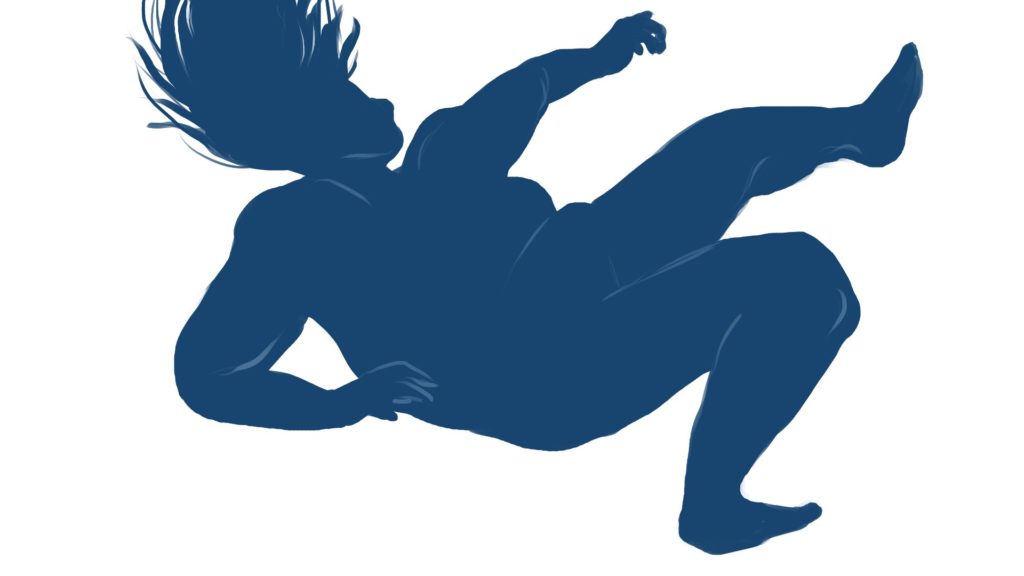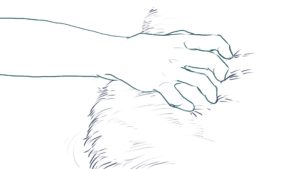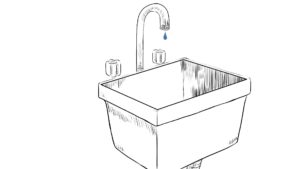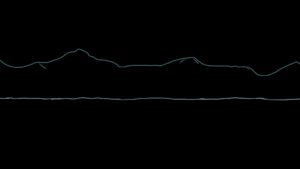
Artist Statement
Maria DeGenova mixes digital animation with established templates of religious parables and storytelling to bring concepts of modernized spirituality and mythology to life. Personifying common concepts and giving them their own histories to awaken from, she creates new yet familiar characters in the forms of deities. In her animated short film Fear: Her Prelude, she tells the tale of the Goddess of Fear, bringing the audience face to face with an embodiment of this mysterious force. Through the character’s movement and the narrative structure, the viewer is encouraged to find new ways of understanding spiritual encounters.
Lily Gildston: First, tell me a little about your work. How would you describe it?
Maria DeGenova: I would describe my work as character and narrative-focused. Whether it be through animation or comic panels or just simple illustration, I love creating characters and stories that play with themes of spirituality and mythology. I see stories- particularly visual stories- as some of the most effective ways of getting people to pay attention or think about something.

LG: When did you decide to be an art major? How did you decide you wanted to be an artist?
MDG: Actually, I decided to be an art major very last minute. Originally I was applying to TCNJ for the psychology department with a chemistry minor. But at the last minute I thought “What am I doing?” and realized that I had no real desire for working with any of those topics. Art and creative processes were really the only things I had any interest whatsoever in pursuing, so I submitted my portfolio last minute and decided to give the art major a shot. For me, that decision was all about just wanting to create and translate my passion into a possible job.
LG: How do you get into your “zone,” your creative headspace?
MDG: Getting into my “zone” can be tough sometimes when my head doesn’t want to cooperate. But usually, consuming something that someone ELSE has created does the trick. Whether that be music, a movie, other fine art, my friend’s work, etc. That usually spurs me to want to make something just as good as what I’m enjoying.

LG: Which studio class has been the most valuable to you and your growth as an artist?
MDG: My most valuable studio class would, oddly enough, probably be Sculpture 2 with Prof. Baumgartner. I don’t usually work in sculpture in my practice, but the work I did in that class and the themes I worked with really made me feel accomplished by the end. It helped me broaden my horizons with medium and realize exactly how many format stories can be told in. We were allowed to be so flexible, and to really push our understanding of “sculpture”. It was an invaluable experience.
LG: What is your current studio set-up/working process at home? Have you adapted your working process based on current conditions?
MDG: Because my work right now is pretty much solely digital, I have been lucky enough to not have to change much about my practice in current conditions. All I need in my laptop and drawing tablet, and I’m set. So even being huddled away in my apartment 24/7, I really don’t have any physical restrictions on my work.
LG: You mentioned that your inspiration to make art can come from seeing other people’s work. How important is collaboration in your process? Do you bounce ideas off others in the early stages of your projects, or do you tend to problem-solve alone?
MDG: I have a few friends that I like to bounce ideas off of, but most of the time I’m just rattling around inside my own head. Not to say that I’m opposed to collaboration- I’ve collaborated with writers before to draw comics, and I’m currently planning a graphic novel with a friend of mine in my free time. I know too many talented people to completely isolate myself.

LG: I’m interested to learn more about why “visual stories” are important to you. Where do these stories come from? Are these stories ever written down? Do you build the narrative before making the artwork, or do the story and visuals come together organically?
MDG: It really depends on the stories! I work with both full, draw-out stories as well as small snapshots or implied stories. For instance, in my current work I’m playing with making new deities or gods based off of common concepts or feelings (for instance, a Goddess of Fear). In traditional examples of religion, gods and deities are almost always established and introduced through a series of myths and parables. Evidence of these stories linger in the depiction of these beings, such as in the iconography associated with various gods. The histories created to birth these gods are how people are able to become invested in them and begin to understand them. That’s what I want to play with; creating my own stories and figures to make people think about spirituality in a new way. So depending on the situation, sometimes I might want to tell a full-length creation myth. Other times, I may feel that a single snapshot, where a story is implied, will cause more thoughtful interactions.
LG: Are there any art historical figures that influence your work? Do you look to any contemporary visual storytellers for inspiration?
MDG: A lot of my inspirations right now are contemporary. Chitra Ganesh and Shazia Sikander are two artists whose work I take inspiration from for my usage of religious iconography and mixing various details together to create something new. Ganesh utilizes a comic format in a lot of her work as well, which is something that immediately drew me in. Also, there’s an animator named Julia Pott who led me to try my hand at animation after I watched her short film “Belly”.
LG: Professor Baumgartner’s class was definitely unforgettable! After exploring sculpture and installation, will you incorporate more three-dimensional elements into your work? Do you think three-dimensional can change how stories are told?
MDG: I think 3-D is a fascinating way of telling stories, and could potentially be one the most effective ways. When you think about it, encountering something that shares your real, physical space is something that is likely to capture your attention all the more. There’s something special there. Maybe that’s partially why mediums such as live theatre and dance are viewed so highly- that kind of storytelling in the audience’s physical space can be so incredibly visceral. I’d say that sculpture can certainly be used in a similar way, to tell or imply stories in an even more unique way. While I don’t see myself incorporating 3-D sculpture into my work in the near future, it’s something I’d love to explore eventually.

LG: The saying goes, if you do what you love – what is your passion – you’ll never work a day in your life. Do you agree? What are your professional goals after graduation?
MDG: To an extent I agree, though I guess I’ll probably know for certain once I actually have to rely fully on my passion to pay bills! I feel lucky to be able to equate art with work in my life, since I know not everyone gets to do what they love for work. Post-graduation, I plan on definitely keeping an eye out for jobs in my field. For the past year or so I’ve begun to do digital commission work, and have begun building up some recurring clientele already. It has made me unbelievably happy and grateful. So even if the world might stunt my goals for a career in its current state, I know I’ll always keep art in my life in some capacity.
LG: And finally, in one word, how would you describe the core of your practice?
MDG: Oh that’s tough. I know that I’ve written it a million times already, but I think that I’d probably go with “Story”. All of my work really comes back to me just wanting to make characters and tell people stories.
